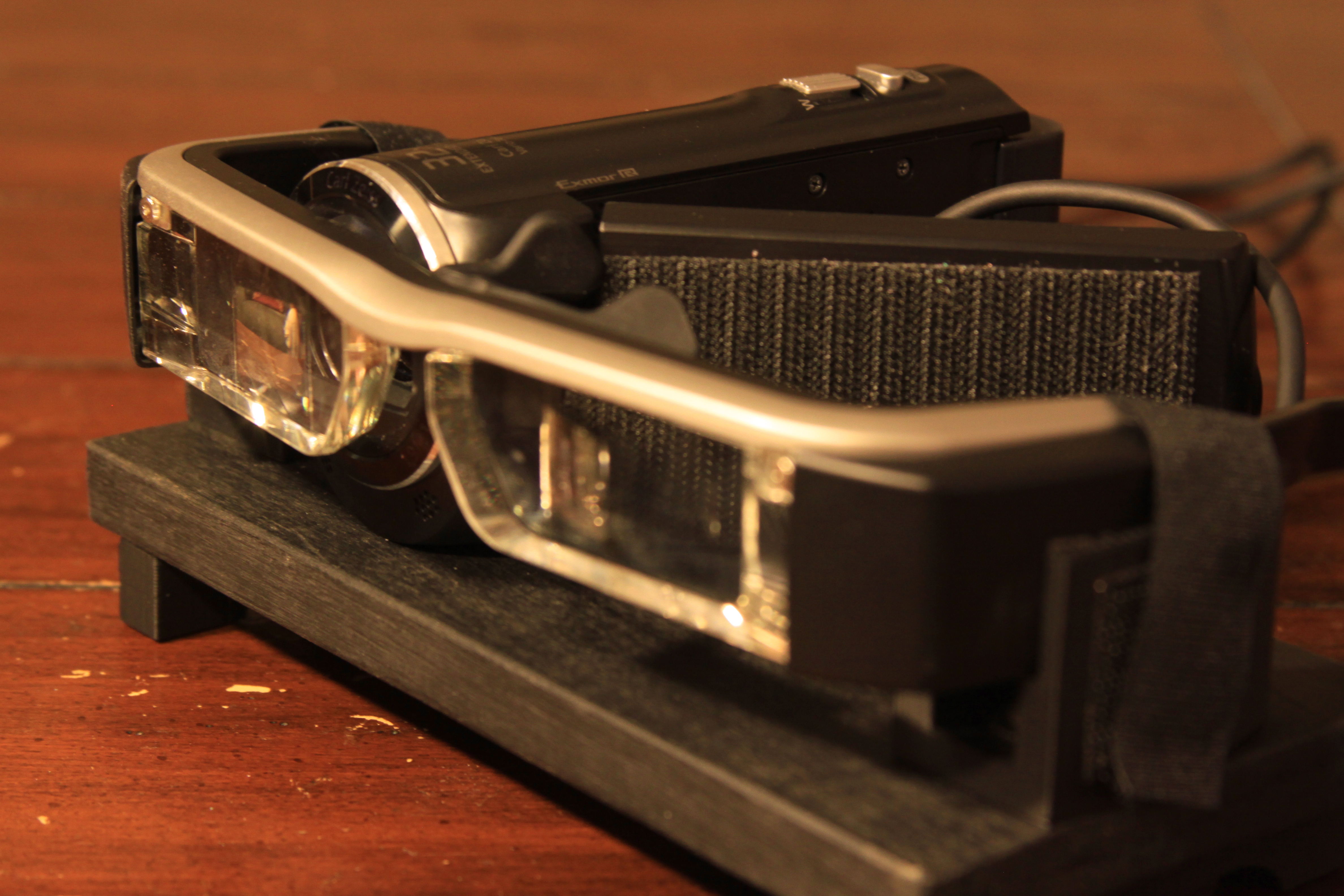Epson Moverio BT-200 Augmented Reality Glasses Review
Epson proves that Augmented Reality is here and starting to deliver on its promise. The Moverio 200 glasses are far from perfect, however, and the applications are just emerging.
Games
First, a note about how I recorded some of the video demonstrations. Epson rigged up a 3D-printed contraption with a mounted camcorder and Velcro straps to hold the glasses in place in customized slots in front of the camera. Pretty nifty. Instead of being able to see through the glasses, I had to guide my interactions using the viewfinder on the camcorder, zooming in and out to get the proper view. It took some practice and several attempts at each app to get something viewable, but it worked. The only caveat is that the camcorder has one lens, and the glasses have two. So these demos are, for all intents and purposes, monocular views of binocular experiences. Still, I think you'll get the idea.
I tested two different games, both fairly simple. The first was Psyclops, from a small developer called Imaginary Computer. The title is a first-person shooter, and the goal is to blast alien invaders. You find the aliens by moving your head and changing your field of view and then tapping on the trackpad of the control unit to shoot. Each game lasts about 60 seconds. Your score is tracked, but there aren't any subsequent levels to climb. It gets boring pretty after a while, but at first its simplicity is nice.
Imaginary Computer has another game called Sky Temple, which is more sophisticated. The temple has been destroyed and your job is to re-activate it. You fly through space, grabbing gems and activating pyramids by flying through them while drones hunt you down. You can move between three different levels. The head tracking wasn't really working for me, so I was unable to control my movement as demonstrated in the company's tutorial. But bear in mind that this is a demo app with more work to be done. Just so you can get a better glimpse of it, here's a short tutorial and quick demo from Imaginary Computer's CEO Sean McCracken:
MicroRobot, from Creative Solutions, is another first-person shooter, but this time in 3D. Again, turning your head brings on the targets, green sponge-bob looking creatures, some of which zoom by lightning fast. MicroRobot employs a radar in the upper-left corner of the field of view, a technique that we've seen in other AR apps for Moverio, and here it lets you find your targets before they arrive, or turn your head and body to bring them to you sooner. This game has three different waves, although these seem to provide slightly different action, not necessarily more difficulty. There are three different weapons -- one that shoots in a single line, another that sprays shots and another that shoots objects once they are lined up in your crosshairs, but with a more pleasing explosion -- assuming you're into that sort of thing.
One thing to note about all of these games is that, as you might imagine, visual precision is a blessing and a curse. AR applications are meant, of course, to allow the incorporation of the real world. None of those games do much beyond head tracking -- that is, there's nothing in the real world that matters to the games. Therefore, the real world can interfere with how you actually see all of the game's elements. The games I've mentioned are all pretty rudimentary and do not rely on the detail that most video games do, so the lack of visual precision isn't a big deal. But still, there were times I was hard-pressed to identify a target due to all of the visual stimuli in my field of view, especially when I moved my head around to find objects.
It's one thing when you have a fixed position and, say, a blank wall, but look up and around and there's really no way to avoid the random window blind or pile of unopened mail, or whatever. On the one hand, I'm certain the resolution of binocular glasses will continue to improve, and on the other hand I'm sure visual interference will be a hindrance regardless, and on yet another hand (if one had three hands), I'm pretty sure the value of AR-based gaming will include true augmentation, not just games projected into the air.
Get Tom's Hardware's best news and in-depth reviews, straight to your inbox.
Current page: Games
Prev Page The Competition And Technical Specifications Next Page Business Applications-
usertests If I buy into AR glasses, it would be what Vuzix is doing, with the entire lenses as a display, or with an image projected directly onto the retina. AR apps that can cover your entire FOV are more useful, and Google Glass's corner display causes eye strain.Reply -
qlum In other words this may be released but its still a proof of concept far away from any practical use.Reply -
dgingeri I want an app for these that would show a realtime map centered around my location in the upper right corner, like the minimap from WoW, and show me pop up names for people I work with over their heads so I can be reminded of people's names.Reply -
AR Dirt You may be interested in the only Podcast dedicated to the world of AR. Go to www.ARdirt.com/ourapp to learn how to download the podcast app for free. You can get it on iOS, Google Play, Amazon App store and Windows phones.Reply

